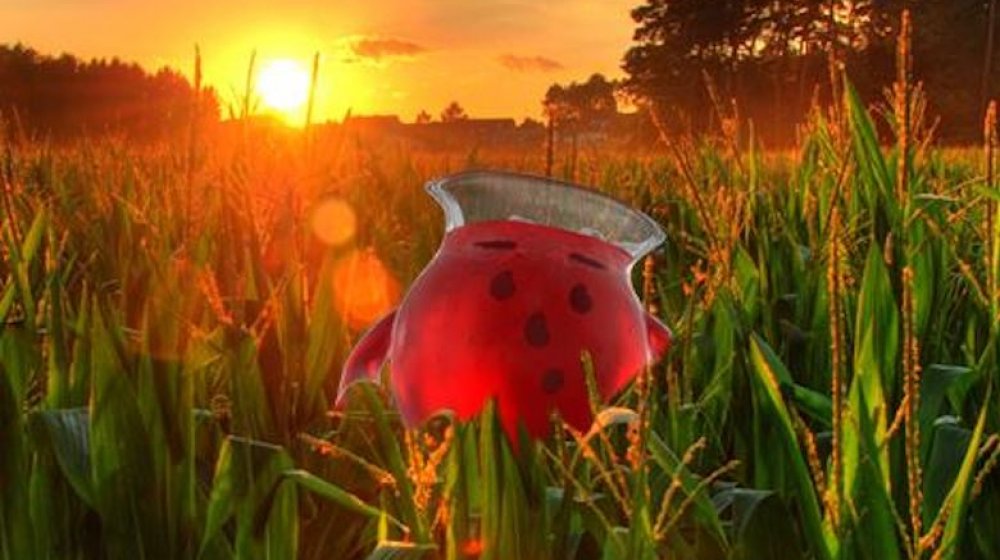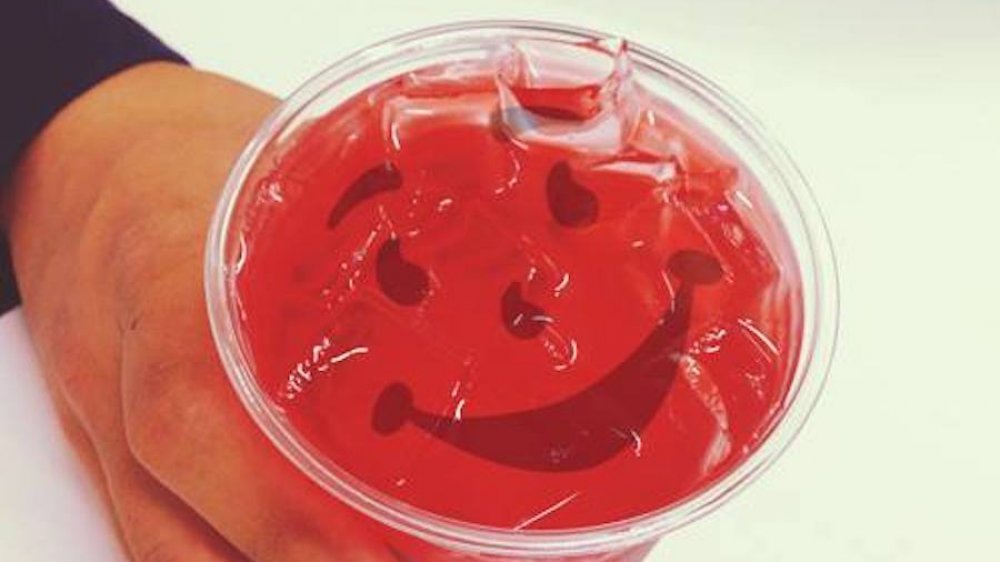You Might Want To Think Twice About Drinking Kool-Aid. Here's Why
It's been a while since the Kool-Aid Man smashed his way into the collective orbit. For a certain generation, the smiling anthropomorphic pitcher was a fixture of Saturday morning cartoon commercial breaks, and the powdered beverage that he was hawking held a permanent place at so many childhood tables. But Kool-Aid has tasted its share of unpleasantness, and there are plenty of reasons why.
Kool-Aid's story dates back to the 1920s, and over the years, the affordable, family-friendly beverage has survived a number of bumps in the road, including a Depression-era price drop and the fact that Kool-Aid was laced with drugs and served to unwitting people during the psychedelic '60s (via Vice). It has a particularly unpleasant association with a mass suicide in the 1970s: 900 members of a religious cult died after consuming a poisoned beverage made with powdered drink mix. That gave rise to the popular saying, "don't drink the Kool-Aid," which cautions against being a sheep. It's worth noting, however, that the cult actually drank an off-brand competitor called Flavor Aid (via The Atlantic).
The real reason not to drink Kool-Aid is that it's bad for you. Although product packaging might tout vitamin content and display misleading images of fruit, Kool-Aid isn't going to benefit kids health-wise.
The reason not to drink Kool-Aid is straightforward
As reported by The New York Times, childhood consumption of sugary drinks can shape preferences for sweetened beverages later in life. In 2019, the University of Connecticut's Rudd Center for Food Policy & Obesity compared 23 of the top-selling children's drinks. Kool-Aid was among the worst offenders in terms of grams of sugar per serving and marketing aimed at kids.
These days, Kool-Aid's product line includes the powder mix, juice pouches, multi-serving bottles, and liquid mixes. A canister of pre-sweetened grape Kool-Aid contains 16 grams of sugar per serving, more than half of the American Heart Association's recommended daily intake for women and almost half the recommended amount for men (via Healthline). But with claims like "good source of vitamin C" and "35 percent less sugar than leading regular soda," sussing out the nutritional value can pose a bit of a challenge.
The nutritional info on a packet of unsweetened Kool-Aid lists zero calories, which sounds innocuous enough. But that doesn't account for the amount of sugar you might add during preparation. For instance, Instructables recommends using a cup of sugar and two quarts of water for one packet. The folks at the no-nonsense nutrition site Is This Bad For You? call Kool-Aid "nothing but a massive dose of sugar," writing that a cup of it clocks in at 20 grams, or five teaspoons, of sugar per serving.

